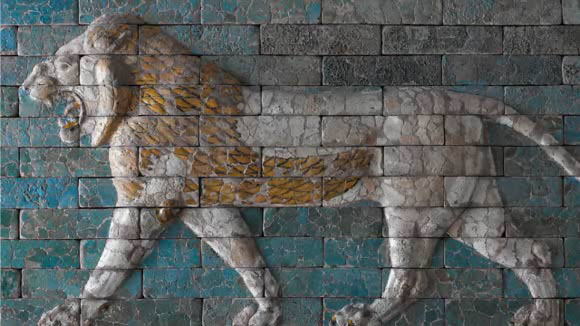“Babylon”, opening imminently at the British Museum, is a vigorously revisionist, thoroughly engrossing and ultimately shocking exhibition. The show’s subject, in the words of curator Irving Finkel, is “a place that has become utterly remote in reality, yet remains ubiquitous in the imagination.” Babylon, once the greatest city in ancient Iraq, former capital of King Nebuchadnezzar, is historically distant indeed – more than two and a half millennia of devastation, decay and pillage have seen to that. But the city continues to live the most vivid of afterlives, in myth and in folk memory.
The mythical “Babylon” is synonymous with corruption and godlessness, and with a brilliant ingenuity fatally undermined by hubris. It is the city that produced the famous “hanging gardens”, once one of the seven wonders of the world. But it is also the site of the Tower of Babel, that storied attempt to reach to the heavens, which brought only fracture and division (according to the Book of Genesis, the babble of many tongues, the different languages of fallen man, were to be attributed to the tower’s collapse). It is the city identified, in the Judaeo-Christian tradition, with captivity and cruel conquest, with evil autocracy, with rulers weighed in the balance and found wanting – tyrants punished by God and even driven mad. To Jews and Christians alike, Babylon is where the chosen people lay down and wept. It is also “the whore of Babel” in the Book of Revelations, the evil empire that must be overthrown if good is to prevail. Rastafarians see it in the same symbolic light. One of the aims of reggae music is incantatory, the chanting down of “Babylon”.
To say the city has had a bad press would be an understatement. But the great fascination of the British Museum’s show lies...


